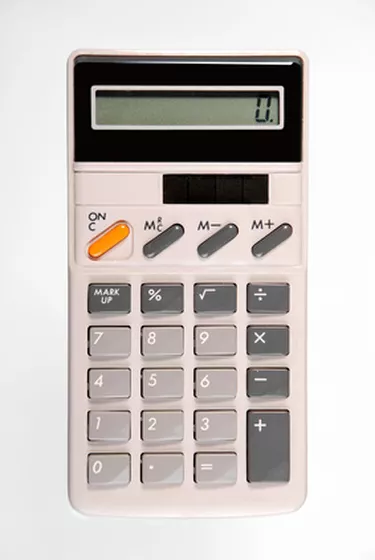
Calculating percentages can be a constant source of confusion if you are not comfortable with applying mathematics in real life. Calculating increases in percentage is useful for many situations, especially financial ones, and it is very easy to do. Many calculators have a percentage function on them, but the calculations are so simple, it is worth learning them anyway. If you learn the principles of making the calculation, you will be able to do it yourself if you need to in the future. There will almost certainly come a time when you need a percentage but don't have a calculator.
Step 1
Find the figure you want to calculate the increase of. For example, you may earn $30,000 per year and be getting a 0.25 percent pay raise. This calculation is very simple if you break the idea down into its constituent parts. A percentage is a fraction out of 100. So if there are 50 men out of 100 people in a room, 50 percent of people in the room are men. We could also express it as a fraction, because we know that exactly 1/2 of the people present are men. In decimals, 1/2 is displayed as 0.5.
Video of the Day
Step 2
Think about your figure. If a percentage is a fraction out of 100, then you can always work out 1 percent of a figure really easily. All you have to do is divide the number by 100, and you have 1 percent. So in the example, 30,000 divided by 100 is 300. Dividing by 100 is always easy because you just move the decimal point two places to the left. To divide by 10, move the decimal one place over.
Step 3
Apply your knowledge. Now that you have identified what 1 percent is, you can work out any percentage of that figure. For example, if you wanted to know what 52 percent of 30,000 is, you'd simply calculate 300 x 52. This brings the 52 percent calculation out at 15,600. If you wanted to work out what a 52 percent increase on 30,000 was, you would add 15,600 to 30,000, and get the answer, 45,600.
Step 4
Work out the rate for 0.25 percent. This is a decimal expression of a quarter, so we can take it to mean that the $30,000 salary would be raised by a quarter of a percent. So to work out the value of a .25 percent increase, we have to work out what a quarter of a single percent is. We divide 300 by four, and get 75. This tells us that a 0.25 percent increase on a $30,000 salary would bring the figure up to $30,075.
Video of the Day